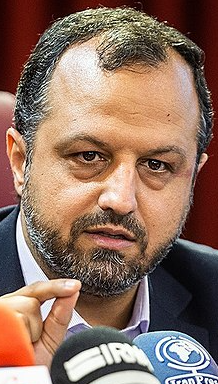July 29, 2022
by Warren L. Nelson

Economy Minister Ehsan Khanduzi has made the outlandish claim that Iran’s oil income has surged an astounding 580 percent under President Raisi, despite the fact that all other sources indicate oil exports are falling and the government is having ever more difficulty paying its bills.
Khanduzi was honest, however, in saying he was engaged in sleight of hand, though most reporters quoting him didn’t catch on to his economic “magic.”
What Khanduzi said was: “Due to the increase in oil exports and our new budget’s currency conversion rate, we saw a 580 percent increase in the Treasury’s income from the export of oil and condensate in the first four months of this [Persian] year” compared to the same period last year.
The key phrase was “our new budget’s currency conversion rate.”
Last year, the government converted oil revenues from dollars to rials at the rate 48,000 to the dollar. But Raisi abolished the official rate a few months ago. The current exchange rate now is around 320,000 rials to the dollar. That means that one dollar of revenue now yields 666 percent more rials than last year.
So, a claim that oil revenue has gone up 580 percent in rial terms actually means that oil revenues are down 13 percent in real, not rial, terms.
And that 13 percent drop is shocking and astounding considering that the price of an OPEC barrel of oil rose 47 percent from June 2021 to June 2022. In other words, Iran’s revenues should have risen 47 percent even if the country did not sell even one barrel more.
The fact that they fell 13 percent, as extrapolated from Khanduzi’s statement, indicates oil sales fell around 40 percent from last June to this June—contrary to the Raisi government’s repeated claims that it has defeated sanctions and boosted oil exports astronomically.
There could be other factors behind the revenue drop besides a drop in barrels of exported oil. For example, it is known that Russia is discounting oil at a high rate to be able to sell its oil. Iran may have discounted some of its oil at a greater rate, which would reduce oil revenues without reducing oil export volume. It is also likely that some oil exports have been paid for by barter. Oil Minister Javad Oji said July 4 that the country’s oil sales were 80 percent for cash and 20 percent for barter.
So, discounted oil and barter deals account for part, but likely not all, of the revenue drop and Iran’s exports did fall, but not by as much as 40 percent.
Yet another problem was revealed when Lloyd’s List reported July 28 that a tanker docked in Croatia to deliver 700,000 barrels of what it called Malaysian crude was ordered to sea when Croatia determined that crude to be Iranian.
The point remains that the government is trying to pull the wool over the public’s eyes by its laughable claim to have boosted oil revenues by 580 percent. And other officials have ignored Khanduzi’s claim and given different figure for oil revenues.
The big question is: How much oil is Iran really exporting? Those numbers are far from clear, in part because Iran goes to great lengths to hide its oil exports for the very rational reason that it doesn’t want to help the Americans clamp down on its clandestine export routes.
Those trying to track Iranian sales watch what is loaded at Kharg Island, the terminal for 90 percent of Iran’s exports, and Lavan Island, the terminal for almost all the rest of the country’s exports. This, however, doesn’t necessarily equate to revenue-producing sales. Iran supplies Syria with all its oil needs but the Syrians get it on credit. And Iran puts some of its oil into storage at points around Asia.
There is general agreement among oil watchers that Iran’s exports peaked at a little over 1 million barrels a day in January and have fallen since then. Kpler, the monitoring firm most frequently quoted, put Iran’s exports at 908,000 barrels a day in March, 820,000 in April and a dismal 400,000 in May.
Vortexa, giving figures by the quarter rather than the month, says Iran exported 850,000 barrels a day in last quarter of 2021, 980,000 in the first quarter of 2022 and 820,000 in the second quarter of 2022.
The International Monetary Fund (IMF) has put Iran’s exports for all of 2021 at an average of 710,000 barrels a day.
To put it in context, before sanctions, Iran exported 2.5 million barrels a day for decades. And in 2013-15, when the first string of sanctions was imposed by Europe as well as the US, Iran normally exported more than 1 million barrels a day. So, things are definitely not going well for the regime.
Another number that contradicts Khanduzi comes from the Supreme Accounting Office, which issued a report covering the first two months of the Persian year. It said the Treasury collected only 15 percent of the oil revenues it anticipated collecting in the first two months.
The bottom line, however, is whether it got enough revenue to cover its spending. And the Supreme Accounting Office report shows the Raisi Administration drowning in red ink. In those first two months, total revenues from all sources came to 880 trillion rials, the report says, while government outlays totaled 1,260 trillion rials-meaning that 30 percent of government outlays were not covered by revenues.